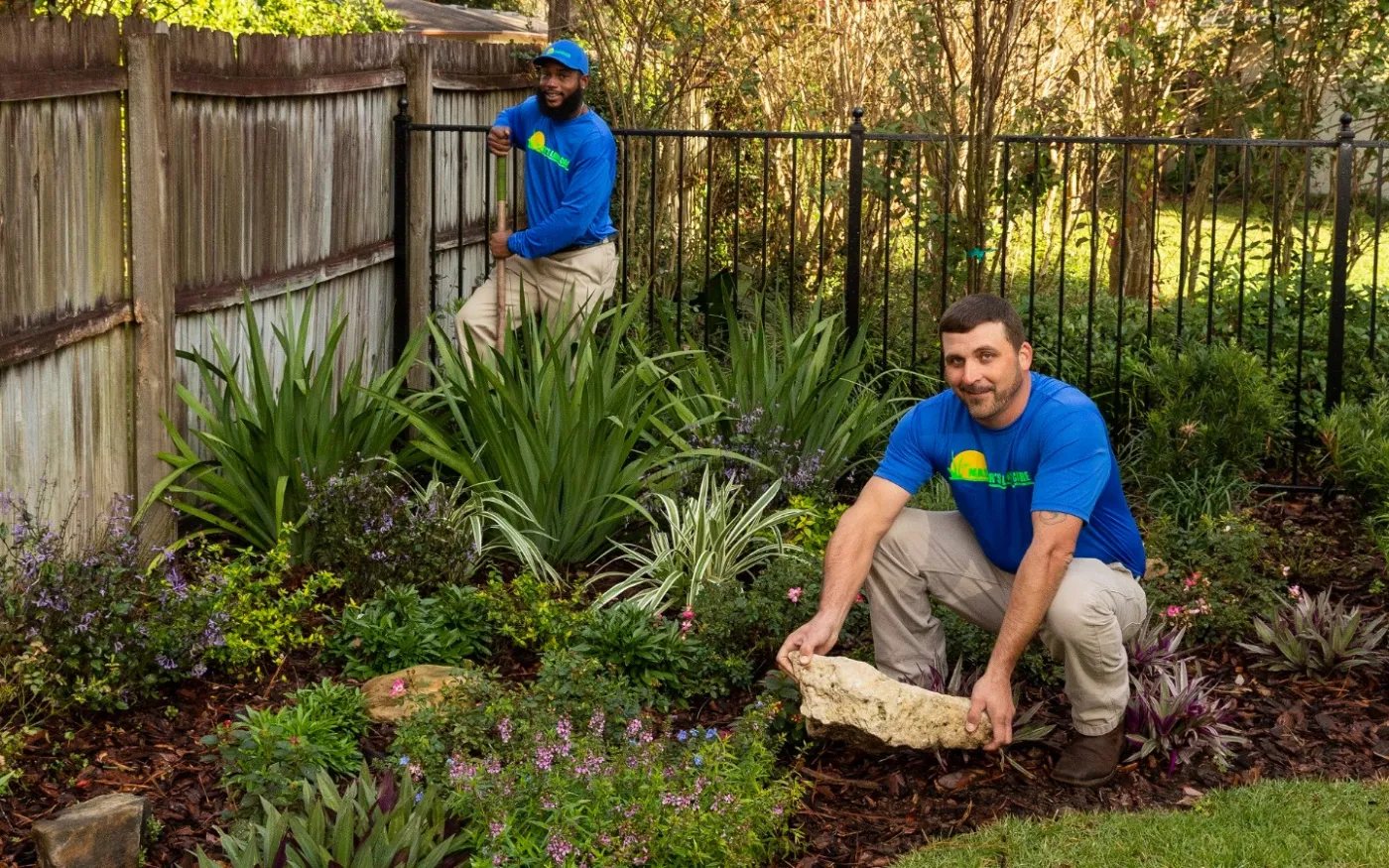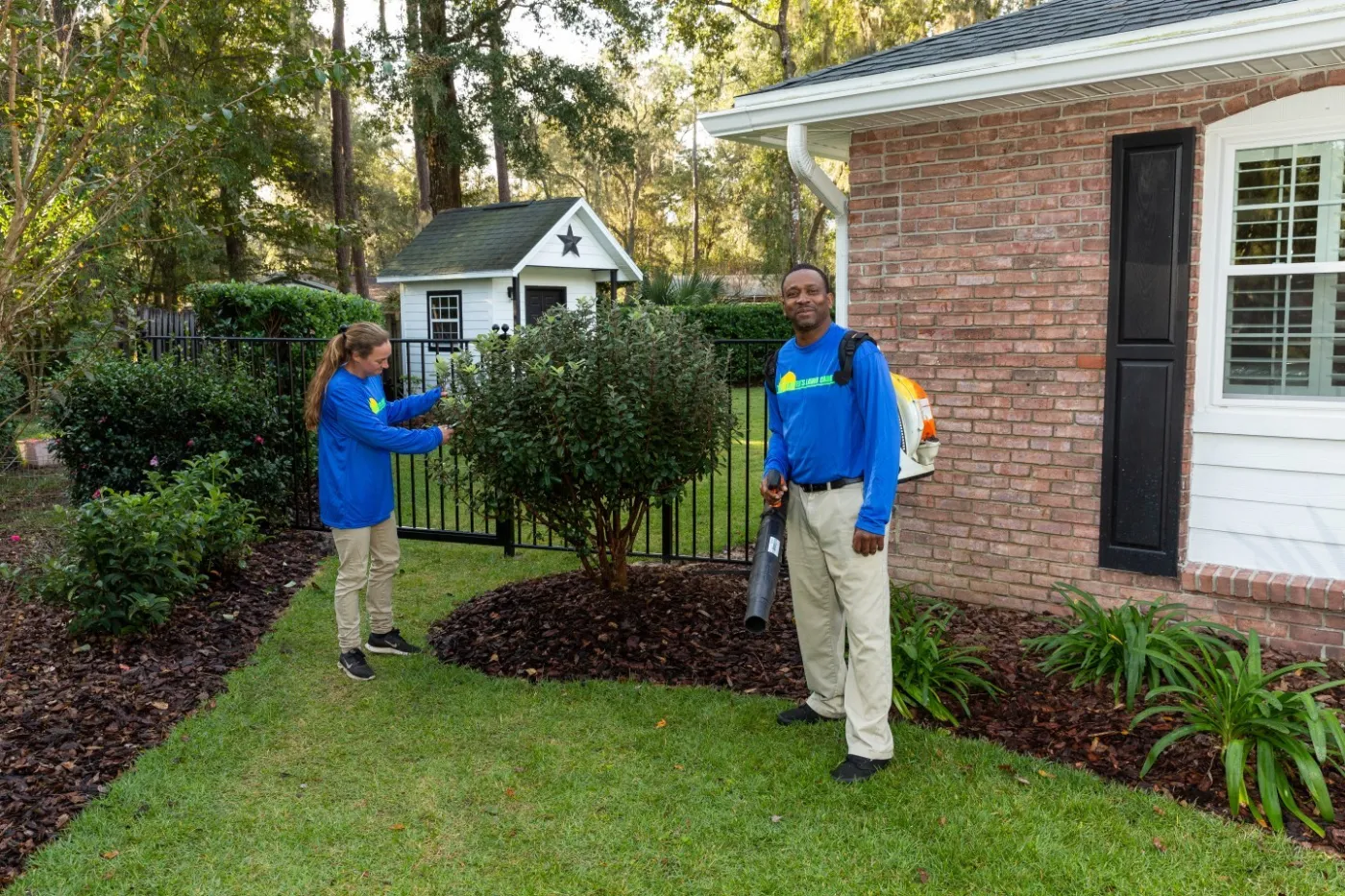For many homeowners, spreading mulch is part of the ritual of tidying up their landscape beds and increasing their curb appeal. Some will use landscape fabric under the mulch, in the hope that it will help prevent weeds from growing in their Gainesville Landscape beds.
“There are various types of landscape fabric, and some work better than others, but unless they're under rock they all will be useless after several years ” said Rusty, founder of The Master's Lawn Care. One common type is a nonwoven textile made of plastic fibers, often black, that may be perforated with small holes.
The use of landscape fabric is based on the idea that it will either physically intercept weed plants, or that it will keep seeds in the soil from sprouting by blocking sunlight.
“A properly applied layer of mulch is enough to keep weed seeds in the dark,” Rusty said. “You don’t need a layer of fabric to shade them out.”

Related: New Ways to Think of Mulch in Your Gainesville Landscape
The bigger concern is that fabric itself may lead to problems down the road. For example, it is designed to allow the passage of both water and air, which are critical for the roots of trees and other plants; often there are small perforations for this purpose. But in practice, the openings may clog up with soil and organic matter from the decay of the mulch. Air can’t get through and neither can rain.
Landscape fabric is not needed beneath mulch to block weeds, if you have the correct amount of mulch. Also, as the mulch breaks down, the nutrients and compost cannot do their job of helping the plants' roots and weeds end up seeding into the compst on top of the fabric.
Some homeowners use landscape fabric in the belief that it will keep mulch from decaying so it doesn’t need to be replenished. However, most mulch products are made from wood byproducts, and dead wood will always eventually decay in the presence of moisture. That decay is actually one of the great benefits of mulch. As the wood breaks down into humus, it releases nutrients to enrich the soil and feeds beneficial microorganisms that are necessary companions to the roots of healthy plants.
Landscape fabric can interfere with this process. “The mulch will still break down into organic matter, but that organic matter will be blocked from improving your soil,” Rusty added.

Related: The 2 Most Common Gainesville Landscaping Mistakes & How to Avoid Them
Depending on the fabric you install, the fabric itself typically won’t rot, but as the mulch on top of it decays, it often becomes unsightly. “You can end up with a bunch of tattered fabric around the base of your tree,” she said.
You can get the full benefits of mulch by simply spreading an even layer right over the soil around trees, shrubs and perennials. On perennial beds, 1 to 2 inches is plenty. For trees and shrubs, the layer should be 3 inches deep and extend at least 3 feet out from the trunk, or wider if possible. Situations do vary by the environemnt, so these are not blanket statements - but more general rules of thumb.
A place that landscape fabric is highly recommended is under non-decomposing products - such as river rock or rubber mulch. Those materials do not break down, therefore do not create a future problem. They actually help keep the landscape gravel from sinking into the soil and needing replenishment as often.
"These gravel and man-made mulch products are where professionals generally agree that fabric adds a lot of value, without the headaches down the road," offered Rusty.
As you look to add mulch into your lawn and replenish your landscape beds this fall or spring, make sure to decipher where landscape fabric is a good investment, and where it may cost you down the road.
If you need help with your Gainesville landscape upgrades or other lawn service, please do not hesitate to reach out by filling out the form at the top of the page, or calling our office at (352) 378-5296.


